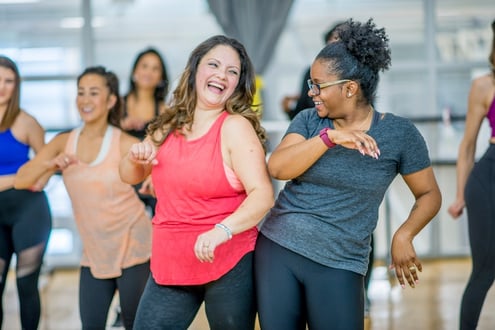 We’re not quite there yet, but it’s just around the corner. Soon the days will start to become shorter and the supermarket aisles will be full of school supplies. That routine you had down for summer is about to change because it’s back-to-school time!
We’re not quite there yet, but it’s just around the corner. Soon the days will start to become shorter and the supermarket aisles will be full of school supplies. That routine you had down for summer is about to change because it’s back-to-school time!
If you’re like most people, you’re not quite ready to say goodbye to the relaxing days of summer and the late nights when you knew you didn’t have to be up early. For some it means your kids are going back to school, or you’re a student and your own classes might be starting, or as a teacher your new set of students will be coming in.
Getting Back to the School Year Routine
With the approach of the new school year comes the need to ease back into a routine that helps not only your children succeed, but you as well. Having to change a routine can be tough in any circumstances. When our routines change from “fun and relaxing” to “less fun and somewhat stressful,” it can be even tougher to pull it off.
The best way to ease back into the new school year is to get into a routine before school even starts. Getting a head start on a new schedule and new responsibilities will allow you and your kids to adjust before school actually starts and the pace really picks up.
Areas to Focus on for Back-to-School Prep
- Sleep schedule. Almost without realizing it, we tend to slip into a different sleep pattern during summer, with the late nights that make for later wake times. This is probably due to several factors, the biggest being that the days are longer and going to bed when it’s light outside can be difficult. When school starts, however, it’s important to be on a different sleep schedule, making it easier to get up and not rush around in the morning. One trick that I typically try is a few days before school starts, pushing bedtime and wake time back 15 minutes each day. It is a smooth transition and will help with a school-friendly sleep schedule.
- The daily schedule. We’ve all grown accustomed to a low-pressure schedule this summer. However, when school starts, having a schedule is critical. There are only so many hours each day to be able to fit in school, homework, extracurricular commitments, church, and chores. Creating a schedule will make it all seem less chaotic.
- Fitness. It goes without saying that not only do we as adults need to move, but our children need to move as well. Literally. Kids sitting for long hours in the classroom, and parents sitting at the office, hinders our ability to concentrate and also lowers energy levels. Take the time to lead by example and include physical fitness activities that the whole family can enjoy. We always used to say “Let’s go outside and burn off all that energy to get you ready for bed!” Not only will grades likely improve, but there will be less stress and you’ll be able to handle the pressure that school brings.
- Breakfast. Another important reason to get into a routine before school starts is to ensure that nobody skips breakfast. Picture this: You’re not used to having to wake up early, you sleep through your alarm. Now you’re rushing to get ready for work and school, and there’s no time for breakfast. Studies show that children who eat a nutritious breakfast function better. They do better in school, and have higher concentration and energy levels. The same goes for adults regarding our concentration and energy for work.
Back-to-school prep doesn’t have to be difficult; it just takes a little planning. School and work can be tough enough. Make it easier on yourself and your family to establish a routine before it starts!
This blog was written by Ashley Duncan, Weight Loss Coordinator. To find out more about the NIFS bloggers, click here.


 One thing that I’m sure you have heard is the importance of
One thing that I’m sure you have heard is the importance of  Running, skipping, hopping, bounding, throwing, and crawling are all activities children around the world enjoy and are necessities for proper movement development. Most sports and lifetime fitness activities require one or more of these basic motor skills. Developing basic motor skills sometimes is not our main priority when it comes to our children’s upbringing. In our lifetime, the focus on physical education has somewhat declined due to various reasons, with one reason being a deemphasis on playground time and even family-time physical activity. Beyond physical fitness, there are many other benefits that one can get from being more active, especially at a young age.
Running, skipping, hopping, bounding, throwing, and crawling are all activities children around the world enjoy and are necessities for proper movement development. Most sports and lifetime fitness activities require one or more of these basic motor skills. Developing basic motor skills sometimes is not our main priority when it comes to our children’s upbringing. In our lifetime, the focus on physical education has somewhat declined due to various reasons, with one reason being a deemphasis on playground time and even family-time physical activity. Beyond physical fitness, there are many other benefits that one can get from being more active, especially at a young age. There are many diet personalities out there. If you are one of these, it could be the reason you are having trouble losing weight or maintaining weight loss.
There are many diet personalities out there. If you are one of these, it could be the reason you are having trouble losing weight or maintaining weight loss.
 As a fitness professional I approach training and helping people from the direction that principles guide methods. The reason for this is that methods and fads will always change, but principles never do. It’s beneficial that the methods and variations of movements change from time to time, as long as the decision to change them is based on solid principles and reasoning. Variations are great, such as a change in foot position in a squat, adding load to a plank position, or varying the implement you are using during the exercise. One implement change that can pay heavy dividends (pun very much intended) is using a specialty lifting bar.
As a fitness professional I approach training and helping people from the direction that principles guide methods. The reason for this is that methods and fads will always change, but principles never do. It’s beneficial that the methods and variations of movements change from time to time, as long as the decision to change them is based on solid principles and reasoning. Variations are great, such as a change in foot position in a squat, adding load to a plank position, or varying the implement you are using during the exercise. One implement change that can pay heavy dividends (pun very much intended) is using a specialty lifting bar. It’s staggering how many people in the world are affected directly and indirectly by health problems. You might not have an incurable disease, but there is a chance that someone you love does. Sometimes there are medications and treatments for these conditions, but not everyone receives the attention they need. Sometimes there are no medications. Fortunately, people have organized charitable foundations that help find cures, medicines, and other aid for those in need.
It’s staggering how many people in the world are affected directly and indirectly by health problems. You might not have an incurable disease, but there is a chance that someone you love does. Sometimes there are medications and treatments for these conditions, but not everyone receives the attention they need. Sometimes there are no medications. Fortunately, people have organized charitable foundations that help find cures, medicines, and other aid for those in need. “You've got this!” "Keep it up!” “So strong!”
“You've got this!” "Keep it up!” “So strong!”  Think about the most recognized duos of all time: Batman and Robin. Mario and Luigi. Buzz and Woody. Stability and Mobility. Wait, what? Yes, like superhero teams, stability and mobility work together to achieve a balanced, harmonious environment for functional movement.
Think about the most recognized duos of all time: Batman and Robin. Mario and Luigi. Buzz and Woody. Stability and Mobility. Wait, what? Yes, like superhero teams, stability and mobility work together to achieve a balanced, harmonious environment for functional movement.